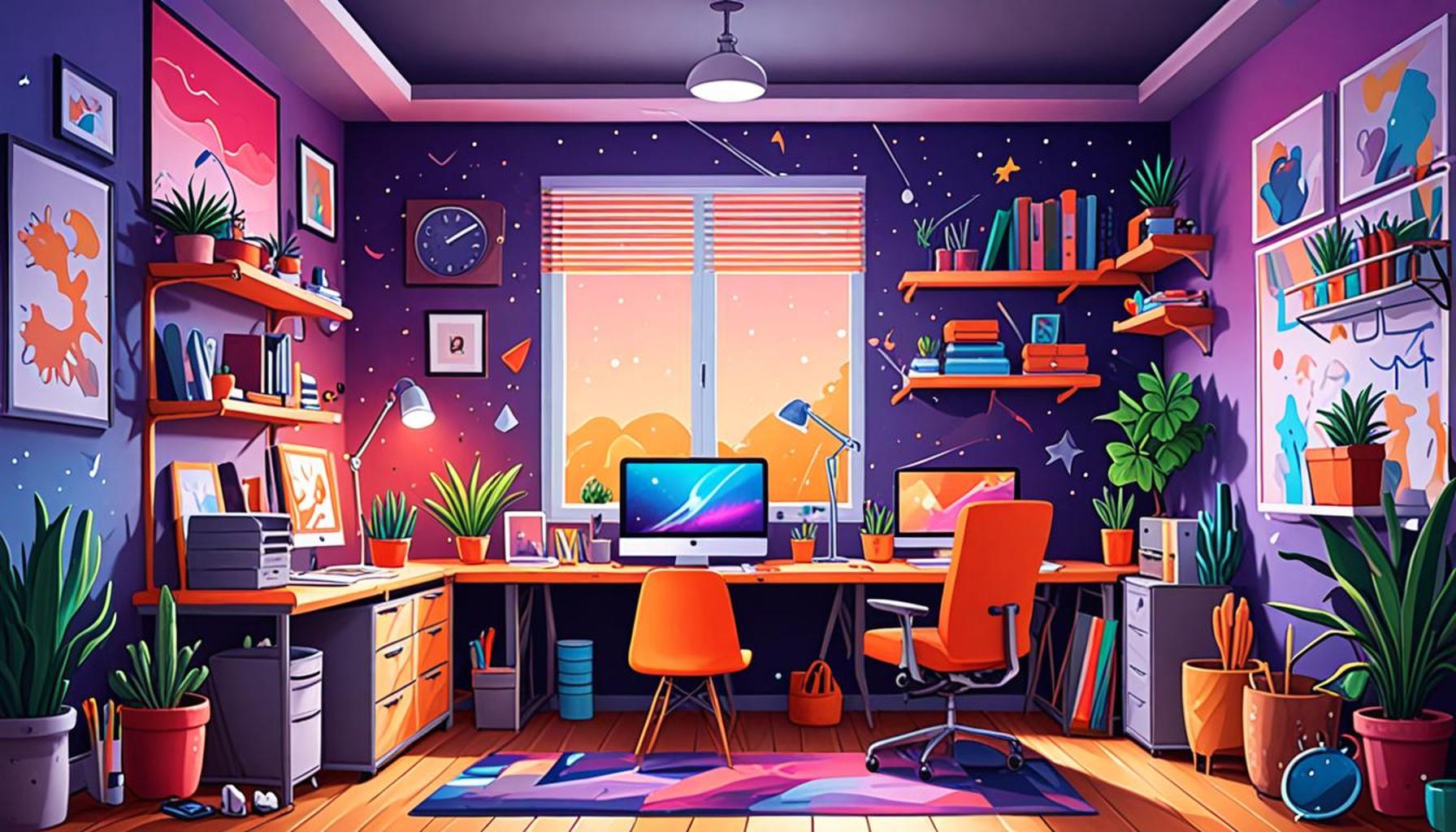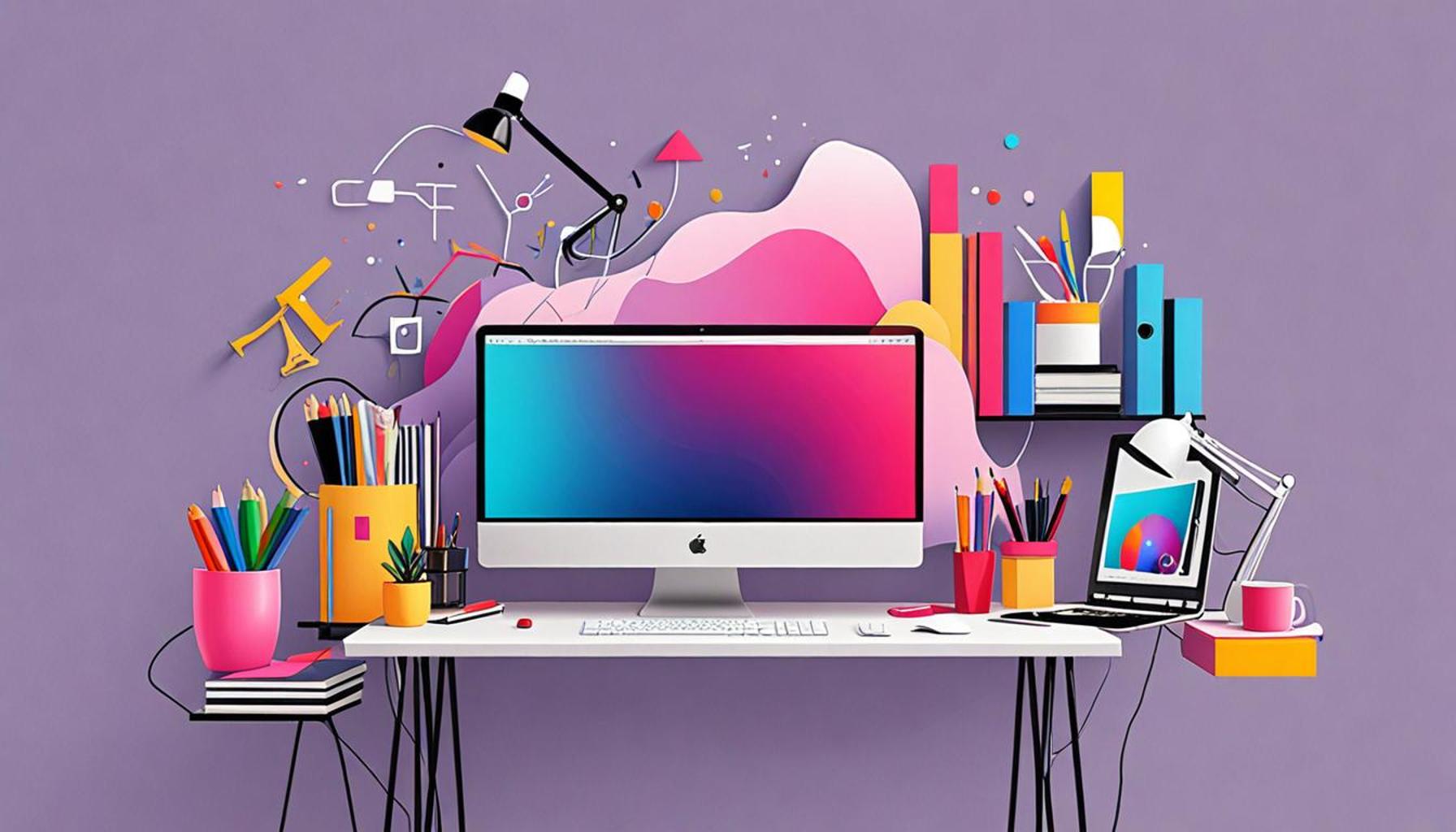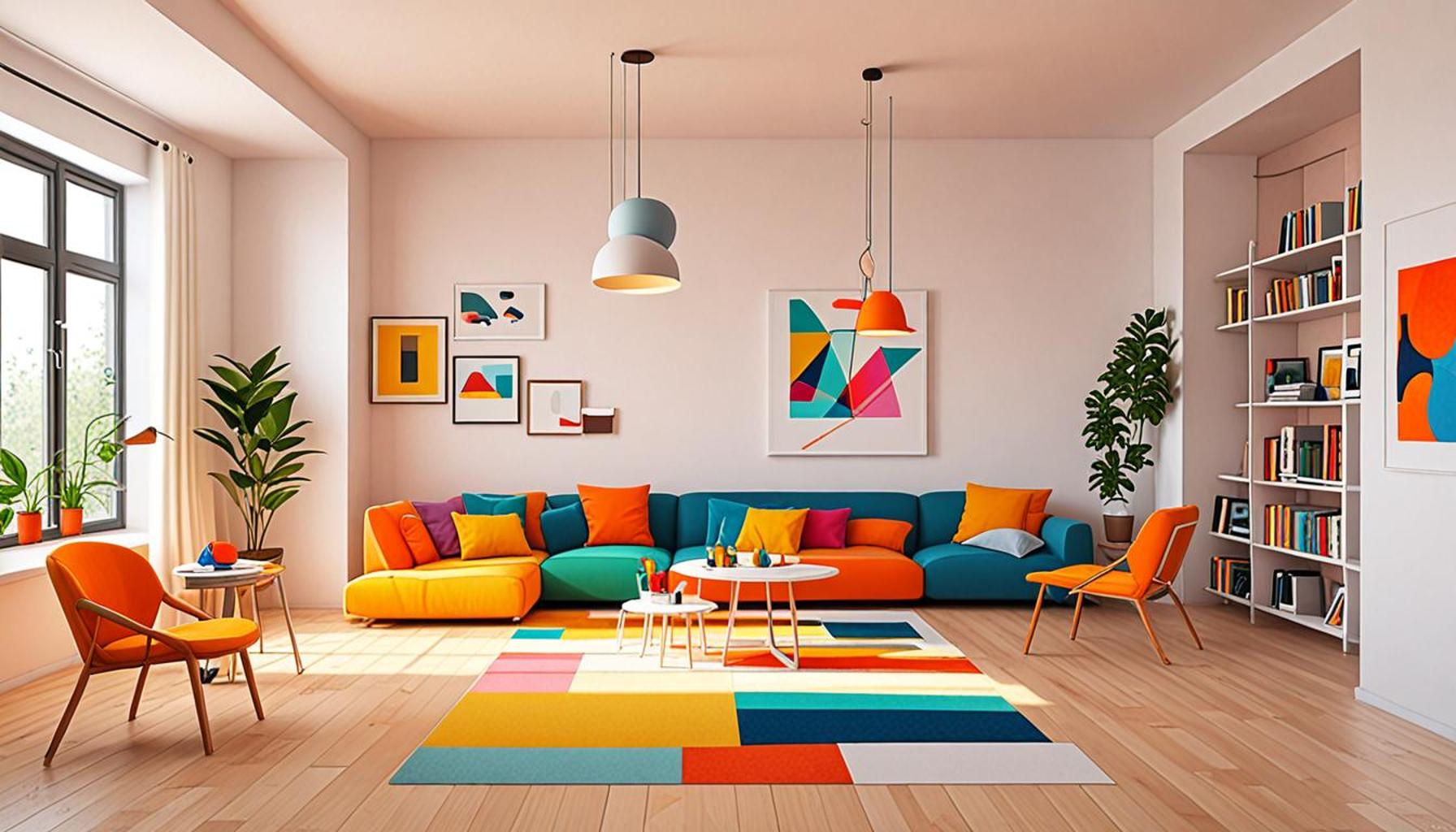Efficient Workspaces: Space Optimization for Productivity at Home

Creating Effective Workspaces
In the quest for enhanced productivity, the design and arrangement of our workspaces at home are often overlooked. Yet, an efficient workspace can turn an ordinary room into a hub of creativity, focus, and effectiveness. Space optimization is vital in this context, helping individuals and teams elevate their performance while minimizing distractions.
One of the primary advantages of an optimized workspace is enhanced focus. A clutter-free and organized environment helps reduce the mental noise that often comes with visual distractions. For example, implementing techniques such as the “Five-S” methodology—Sort, Set in order, Shine, Standardize, Sustain—can streamline your physical space, allowing you to hone in on tasks at hand without losing concentration to extraneous stimuli.
Equally important is functional design, which emphasizes the need to fashion your workspace around personal work habits. This might involve varying desk heights, incorporating standing desks, or ensuring that tools and resources are within arm’s reach. For instance, someone who frequently uses binders or books can benefit from a shelf positioned nearby, thus saving time spent searching for materials while maintaining a seamless workflow.
Investing in comfort and ergonomics is another key aspect of workspace design. Studies show that discomfort from poor furniture can lead to decreased productivity and chronic health issues. Therefore, ergonomic chairs and adjustable desks can enhance not only work quality but also overall well-being, reducing fatigue and discomfort. This holds importance in a nation where remote work has surged; reports reveal that Americans now spend an average of 40% of their workweeks at home. Thus, creating a comfortable setup is more crucial than ever.
To optimize your workspace, consider conducting a thorough assessment of your current environment and pinpointing areas that require improvement. A well-thought-out approach can involve everything from rearranging furniture to leveraging natural light, influencing both mood and productivity. With the advent of numerous online resources and tools, designing a productive workspace has never been more accessible. You might explore apps that help track your productivity patterns or websites offering tips on decluttering.
In conclusion, your home office should not merely be a functional space but rather a well-crafted environment that fosters creativity and productivity. Each strategic adjustment made can contribute significantly to elevating your professional output, making it a worthwhile endeavor. Delving into these topics further can unveil a treasure trove of insights that not only transform your workspace but also lead to remarkable gains in your work life.
DISCOVER MORE: Click here to learn about minimalist strategies
Maximizing Workspace Efficiency
When it comes to maximizing productivity at home, the physical arrangement of your workspace plays a critical role. Many individuals find it challenging to maintain focus in cluttered or poorly designed areas; therefore, employing space optimization techniques can significantly impact work quality and output. A well-structured workspace not only enhances concentration but also fosters creativity, leading to better problem-solving capabilities.
Decluttering is one of the most effective strategies for creating an efficient workspace. As research suggests, the human brain has a limited capacity for processing visual information, which means a chaotic environment can lead to mental fatigue. To tackle this issue, start by removing items that do not serve a purpose in your workday. Create designated spaces for essential tools and materials. For example, consider using drawer organizers to separate office supplies or filing systems for paperwork. An initial declutter can pave the way for a more functional workspace, allowing your mind to concentrate solely on the tasks at hand.
Ergonomics and Comfort
Furthermore, prioritizing ergonomics is vital for maintaining a health-conscious workspace. A significant portion of the workforce in the United States now operates in home environments, making it crucial to ensure that physical discomfort does not derail productivity. Research indicates that 79% of home workers experience discomfort in their neck and back due to improper workstation setups. Investing in ergonomic furniture, such as adjustable chairs and desks, can mitigate these risks. Additionally, accessories like wrist supports or monitor risers can enhance comfort during extended work sessions.
Cultivating the Right Atmosphere
Creating a conducive atmosphere is another essential element of space optimization. This includes harnessing natural light to improve mood and focus. Studies show that exposure to daylight can increase energy levels, making it imperative to position your workspace near windows wherever possible. If natural light is limited, consider using full-spectrum light bulbs that mimic daylight. Additionally, incorporating plants into your workspace can enhance air quality and bring a sense of tranquility. Here are some tips for cultivating the right atmosphere:
- Position your desk to take advantage of natural light.
- Add greenery—plants like pothos or succulents don’t require much maintenance.
- Use soft, ambient lighting to reduce eye strain.
- Personalize your space with decor that inspires you.
When optimized for comfort and efficiency, each aspect of your workspace contributes to a more productive day. A well-planned area encourages you to achieve your goals, making it a pivotal component of successful remote work experiences. By delving deeper into your workspace’s ergonomics, aesthetics, and organization, you can unlock new levels of creativity and effectiveness, ultimately transforming your work-from-home routine into one that consistently yields positive results.
| Category | Key Features or Characteristics |
|---|---|
| Space Utilization | Incorporates multi-functional furniture to maximize area usage. |
| Productivity Enhancement | Encourages a clutter-free environment that improves focus and efficiency. |
In an era where remote work has become increasingly prevalent, the concept of space optimization in home workspaces is vital for maintaining productivity. By investing in multi-functional furniture, individuals can create versatile areas that serve multiple purposes, such as a combination desk and storage unit. This smart use of space not only saves room but also makes the workspace visually appealing, which can positively affect performance. Furthermore, a clutter-free environment has been linked to higher levels of concentration; eliminating distractions is key to enhancing one’s work capabilities.
The strategic arrangement of workspace items can elevate both efficiency and comfort. Techniques like zoning can delineate different areas for various tasks—work, brainstorming, and relaxation—leading to increased productivity. To explore more on how to make the most of your home workspace, delve into actionable tips and advice tailored to your personal space. There’s a wealth of information available that could transform your home office into an efficient and productive haven.
DIVE DEEPER: Click here to discover more
Technology Integration for Enhanced Productivity
In today’s digital age, technology integration is a fundamental component of efficient workspaces. Remote work relies heavily on digital tools that can streamline operations and enhance collaboration. Technologies such as high-speed internet connections, cloud storage, and project management applications can significantly improve overall workspace functionality. For instance, services like Zoom and Slack facilitate real-time communication, making remote teamwork seamless. By investing in these technologies, you can create an environment that not only maximizes productivity but also supports adaptability in a rapidly changing landscape.
Smart Organization Tools
Utilizing smart organization tools is another effective method for optimizing your home workspace. Digital task management software like Trello or Asana helps keep projects organized and deadlines clear. These platforms allow you to break tasks into smaller, manageable steps, reducing overwhelm and improving focus. Moreover, integrating a calendar app that syncs with your to-do list can enhance your scheduling efficiency by sending reminders and alerts. By leveraging these digital tools, you create a structured approach to your work that can significantly enhance productivity and time management skills.
The Power of Minimalism
The principle of minimalism has gained traction as an influential concept in workspace optimization. The idea here is to intentionally limit distractions and clutter. A minimalistic approach encourages individuals to retain only essential items that foster creativity and productivity. For instance, adopting a “desktop zero” policy where you start each day with a clean desktop can set a positive tone for focus. Additionally, a simple color palette in your workspace can reduce visual clutter and promote a calming atmosphere, which has been shown to enhance cognitive function.
Flexible Work Zones
Another aspect to consider is the creation of flexible work zones. Instead of confining yourself to one area, establish multiple work environments tailored to different types of tasks. For example, designate one area for focused tasks, like writing or research, and another for collaborative activities, such as video calls or brainstorming sessions. By physically changing your surroundings, you can stimulate creativity and maintain motivation. Moreover, utilizing foldable desks or mobile carts can help facilitate these transitions, offering versatility in how you approach your work.
Acoustic Considerations
Finally, addressing acoustic considerations is crucial for maintaining productivity in home environments. Noise distractions can significantly hinder concentration and lead to decreased efficiency. To mitigate sound disturbances, consider incorporating sound-absorbing materials such as carpets, curtains, or wall panels. Additionally, using noise-cancelling headphones can help you maintain focus during periods of heightened activity or background noise. Creating an acoustically friendly workspace not only fosters concentration but also supports a more pleasant and productive workday.
By understanding how technology, minimalism, flexible work zones, and acoustics influence your home office, you can fine-tune your workspace for optimal efficiency. The integration of these practices will not only enhance productivity but also transform your work-from-home experience into one that empowers you to achieve your aspirations.
DIVE DEEPER: Click here to discover the power of simplicity
Conclusion: Cultivating an Efficient Workspace for Maximum Productivity
As we navigate the evolving landscape of remote work, the concept of an efficient workspace becomes increasingly vital for sustaining productivity. The interplay of technology, minimalism, flexibility, and acoustics serve as foundational block for achieving this goal. By integrating digital tools into your daily routine, you can streamline workflows and enhance collaboration among colleagues, ultimately creating a more adaptable working environment.
Moreover, embracing minimalism not only helps declutter your physical space but also fosters a clearer mental state, allowing for improved focus and creativity. The establishment of flexible work zones can invigorate your daily tasks, shifting your mindset and maintaining motivation as you transition between different settings tailored to specific tasks.
Lastly, prioritizing acoustic considerations in your workspace can drastically reduce distractions, paving the way for a peaceful ambiance conducive to productivity. This synergy of thoughtful space optimization can significantly enhance your work-from-home experience, transforming it into a space where you thrive, innovate, and accomplish your goals.
In conclusion, by actively re-evaluating and refining the elements within your home workspace, you have the power to create an environment that not only supports your professional endeavors but also enriches your overall quality of life. Continue to explore innovative strategies and tools that resonate with you, and experience firsthand how a well-optimized workspace can lead to greater productivity and satisfaction in your work life.


